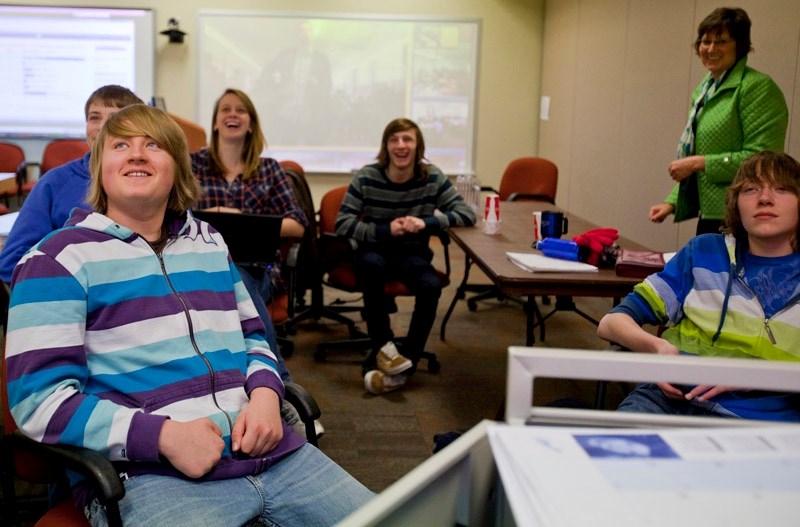About 25 Grade 9 students from Olds High School participated in a videoconference on March 1 focusing on how the education system can respond to the needs of students and prepare them for the future of work.
The conference connected students from eight high schools across the province. In the morning session, students heard from Michael Furdyk, co-founder of TakingITGlobal, a network that connects schools around the world to each other to learn about various aspects of school life in other countries. Students also heard from Sam Shaw, vice-president of research at Encana, Jim Coderre, associate partner at IBM and Phil McRae, executive staff officer at the Alberta Teachers' Association about what those organizations expected from students as they enter the workforce.
Later in the all-day session, students were asked a series of questions from a central moderator and expected to arrive at answers to the questions in a collaborative manner and share those answers with the other students participating in the session from other schools.
“We are talking how we see education preparing students to be part of the 21st century workplace,” said Bev Toews, coordinator of UNESCO associated schools network at the high school.
Prior to the conference, groups of student leaders from the participating schools met three times to come up with four main ideas for discussion at the conference, including how students can be more globally connected and how schools can be built more environmentally friendly, among other topics.
“The whole process was an effort into getting input from students on how they can take charge of their learning,” Toews said.
Tayla Sturrock, one of the students who helped organize the event, said it was challenging trying to put the conference together.
“Some of the technology was not working when we started out so … instead of using video-chat which we were supposed to be using, we kept ending up with Skype randomly coming through and whatnot,” she said.
Sturrock said the main point of the conference was that students shared their ideas on how the future of education should look, “instead of the sheep following the herd master.”
Arnie Knapp said the main point he learned from the exercise was that students can influence how and what they learn.
“We're pretty much learning that we have some choice over our education,” he said.
Scott Swaenepoel said he learned how important technology will be to the world of work in the future.
“We learned like what role technologies play in jobs and school and pretty much everything in the world and how you can interact with people in completely different communities,” he said, adding that he gained a good perspective on how people might tackle one issue in different ways.
The conference was held at the Bell e-Learning Centre.



